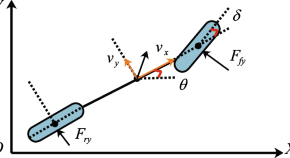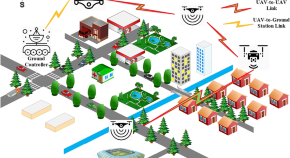
Collection
Graph Theory-based Routing Algorithms and Protocols for Vehicular Ad Hoc Networks
- Submission status
- Closed
Editors
-
DR. RAJKUMAR VERMA
Assistant Researcher Department of Industrial Engineering, Faculty of Engineering, Universidad de Talca, Chile. Official Mail: rverma@fen.uchile.cl, rajkumarverma@utalca.cl, r.vermautalca@gmail.com,rkver83@2gmail.com, Loop: https://loop.frontiersin.org/people/601318/publications Scopus: https://www.scopus.com/authid/detail.uri?authorId=55181932900 ORCID: https://orcid.org/0000-0002-4014-1305 Google Scholar: https://scholar.google.co.in/citations?view_op=list_works&hl=en&hl=en&user=pZI3kecAAAAJ&sortby=pubdate
-
PROF. JUNZO WATADA
Professor Emeritus, Waseda University, Japan. ORCID: 0000-0002-3322-2086 Google Scholar: https://scholar.google.co.in/citations?hl=en&user=pU-e-HoAAAAJ Official Email: watada@waseda.jp, junzo.watada@utp.edu.my, junzo.watada@gmail.com University: https://gateway.utp.edu.my/home/Content/e0060-autonomous-junzo
-
Dr. Broumi Said
Laboratory of Information Processing Faculty of Science, Ben M’Sik, University Hassan II, Casablanca, Morocco. Official Mail: s.broumi@flbenmsik.ma, broumisaid78@gmail.com, ORCID: https://orcid.org/0000-0002-1334-5759 Google Scholar: https://scholar.google.co.in/citations?hl=en&user=1sfB1r4AAAAJ Loop: https://loop.frontiersin.org/people/606343/bio
Articles (3 in this collection)
-

-
Sensor Spoofing Detection On Autonomous Vehicle Using Channel-spatial-temporal Attention Based Autoencoder Network
Authors
- Man Zhou
- Lansheng Han
- Content type: Research
- Published: 16 December 2023

-
SIRFRM - Secure and Intelligent Routing Fairness Rate Model for Flying Adhoc Networks
Authors
- Vinay Bhardwaj
- Deepak Prashar
- Mamoon Rashid
- Content type: Research
- Published: 17 November 2023



